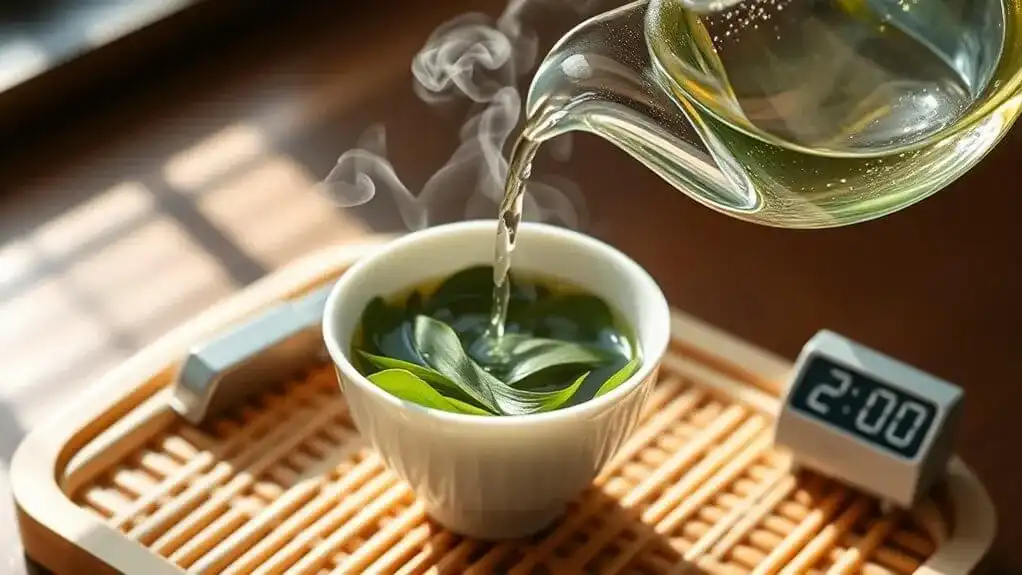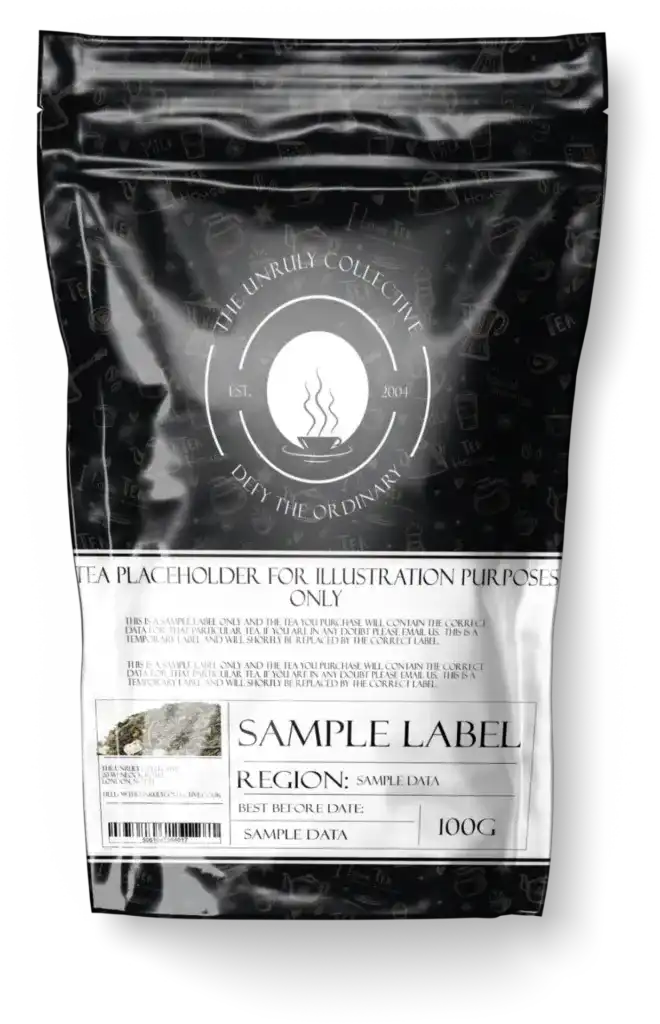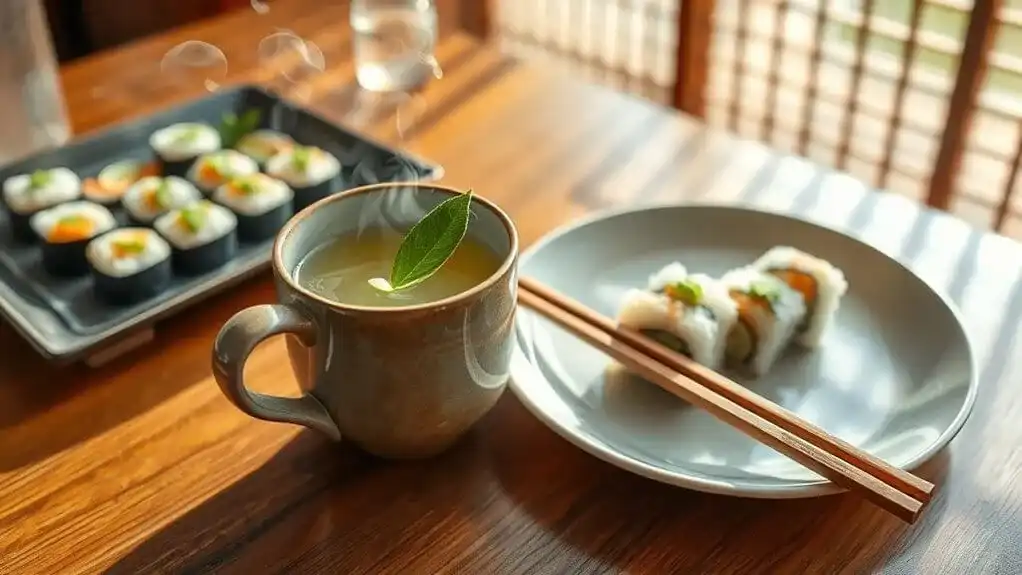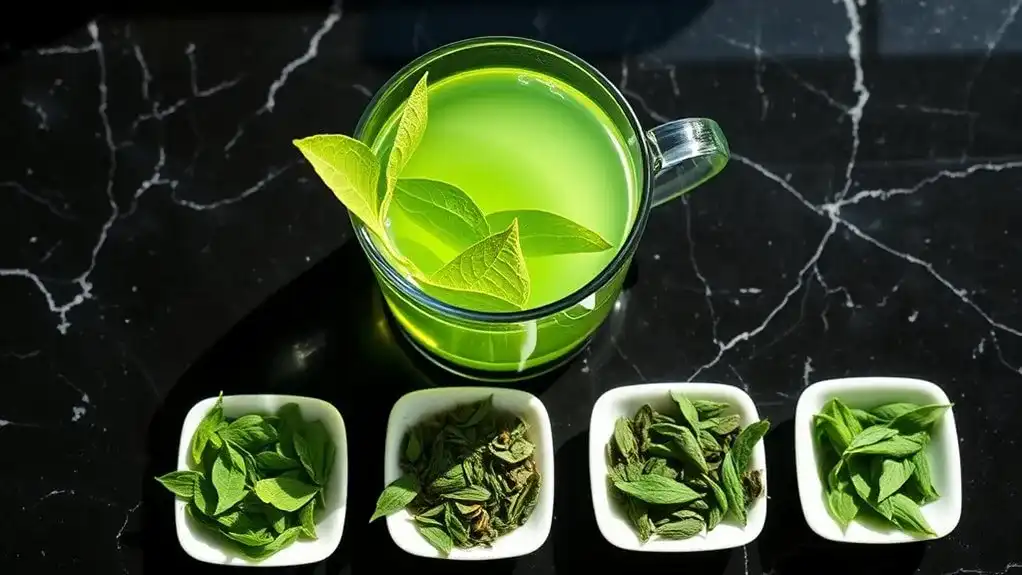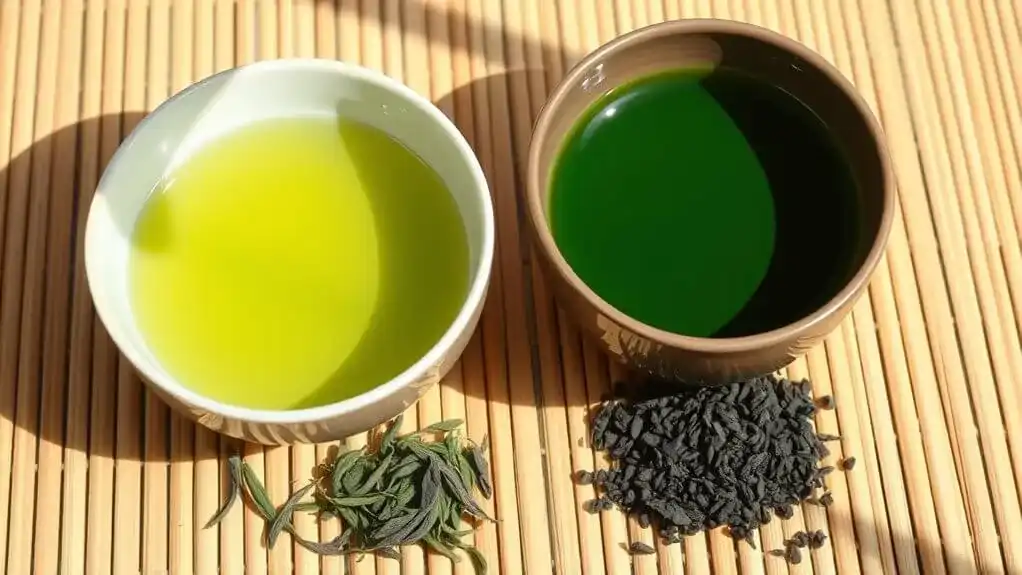Brewing the perfect cup of green tea doesn't require expert skills. Start with quality loose-leaf tea like Genmaicha or Sencha, and heat filtered water to 75-85°C (167-185°F). Use 1-2 teaspoons of leaves per cup, steep for 1-3 minutes, and strain into a ceramic cup. Avoid common pitfalls like using water that's too hot or steeping too long, which can make tea bitter. These basic principles open the door to green tea's authentic flavor and health benefits.
Key Points
- Start with beginner-friendly green teas like Genmaicha or Hojicha, which offer gentler flavors and are more forgiving during brewing.
- Heat filtered water to 75-85°C (167-185°F), as boiling water will make your tea bitter and harsh.
- Use 1-2 teaspoons of loose tea leaves per cup of water, steeping for 1-3 minutes depending on desired strength.
- Invest in basic equipment: a temperature-controlled kettle, infuser or strainer, and ceramic or porcelain teapot.
- Pour water around the edges of your brewing vessel to ensure even saturation of tea leaves.
Essential Equipment for Perfect Green Tea
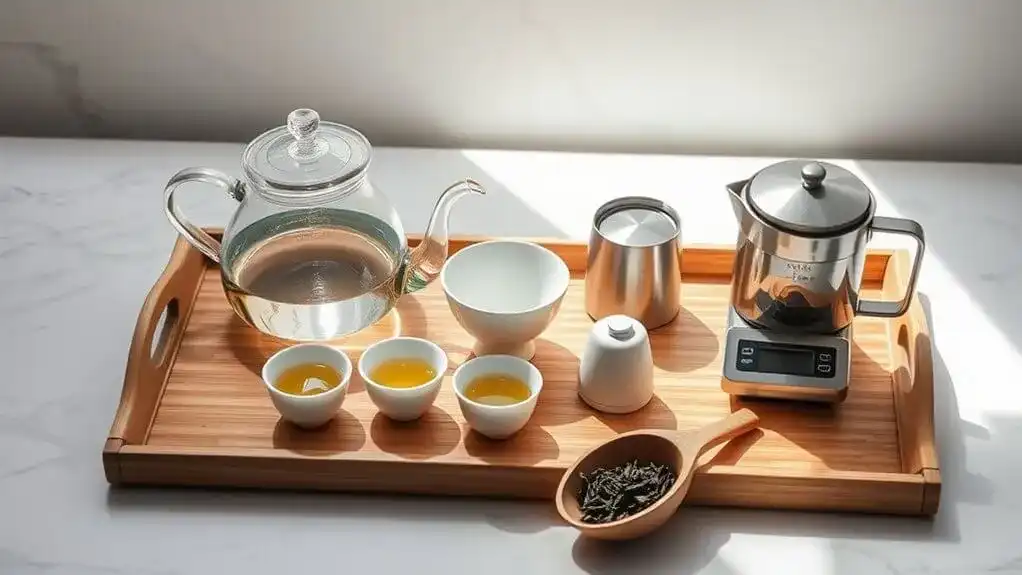
The art of brewing green tea begins with assembling the right equipment. Crucial teaware types include a kettle for heating water, an infuser or strainer for the leaves, and appropriate cups or mugs for serving. Temperature-controlled electric kettles offer precise heating, while traditional tetsubin provide a classic stovetop option. Quality brewing vessels like stainless steel infusers or gaiwans allow tea leaves to fully expand and release their flavors. Tea leaves need room to expand freely as they can grow up to five times their original size during steeping. Ceramic and porcelain teapots preserve the pure taste of tea without absorbing flavors. Using cold, filtered water ensures the best possible flavor in your cup.
For precise measurements and temperature control, a tea thermometer and stainless steel scoop guarantee consistency. A serving pitcher, known as chahai, helps distribute tea evenly among cups. Whether choosing modern electric kettles or traditional Chinese teacups, each piece of equipment plays an essential role in creating the perfect cup of green tea.
Choosing the Right Green Tea for Beginners
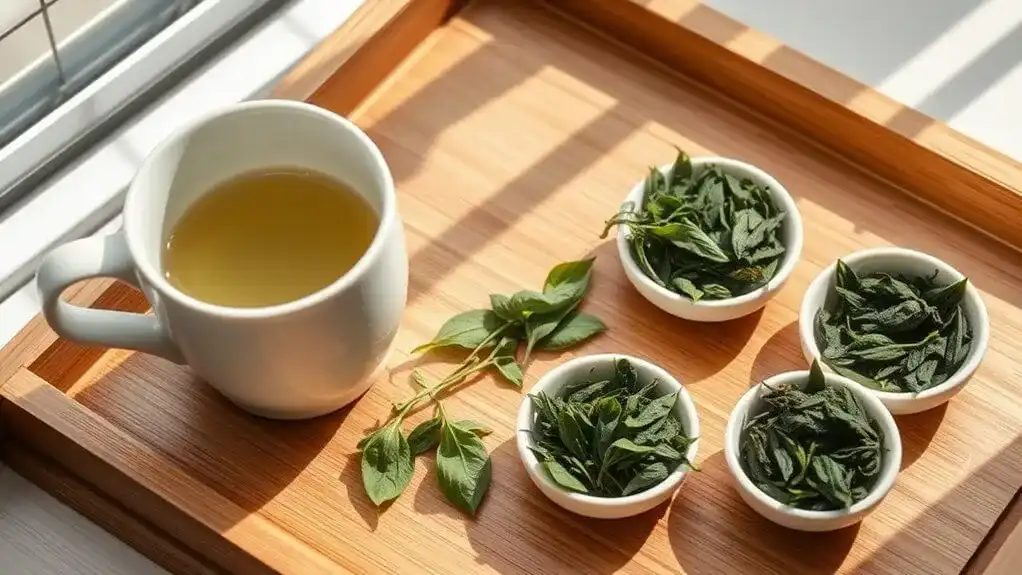
With proper equipment ready, selecting the right green tea becomes your next step toward a perfect brew. For beginners exploring green tea varieties, several options stand out as excellent starting points. Genmaicha's nutty, warm flavor profile makes it particularly appealing to newcomers, while Hojicha's toasted notes offer a gentler introduction to traditional green tea tastes. Brewing your first cup with hotter water increases both the bitterness and health benefits. For optimal enjoyment, most green teas should be brewed with water at 80 degrees Celsius. Daily Sencha is an ideal starter tea as it offers second harvest quality at an economical price point.
Those mindful of their budget will find Latte Grade Matcha and Kukicha providing great value without compromising quality. For health-conscious beginners, Sencha delivers a balanced combination of beneficial compounds and moderate caffeine content. Karigane's smooth, sweet profile pairs wonderfully with beginner preferences, offering subtle melon and cucumber notes that aren't overwhelming. These starter-friendly options help new tea enthusiasts develop their palate while discovering the diverse world of green tea.
Step-by-Step Brewing Guide
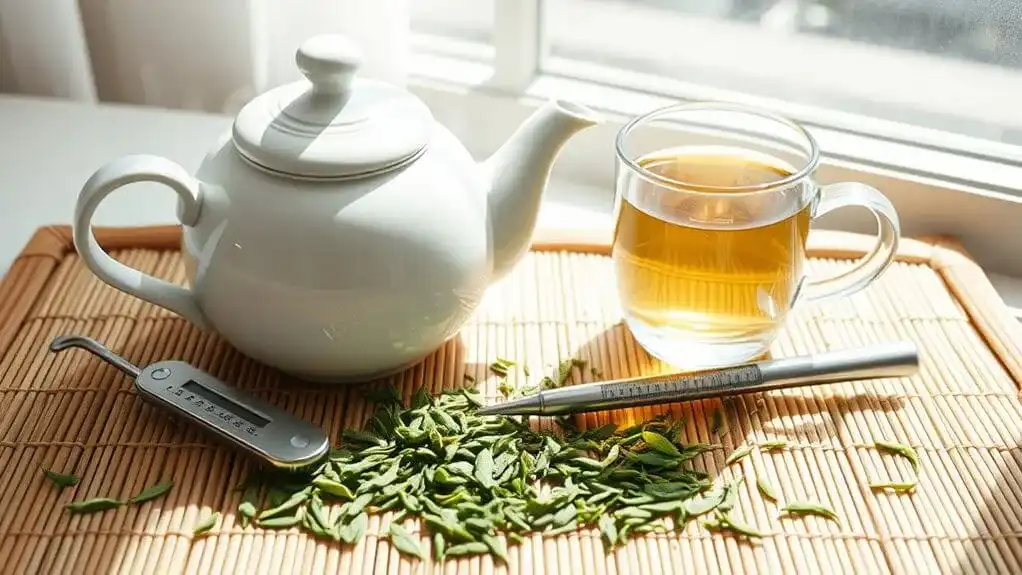
Mastering green tea requires following four essential steps: measuring, heating, steeping, and straining. Start by measuring 1 teaspoon to 1 tablespoon of loose leaves per 200ml of water. Next, heat filtered water to the ideal temperature between 75°C to 85°C (167°F to 185°F). If using boiling water, let it cool for a few seconds first. Adding fresh filtered water creates the purest and most authentic tea flavor.
For proper brewing timing, steep the leaves for 1-3 minutes, depending on the variety and desired strength. Pour the water around the vessel's edges to evenly saturate the leaves. Using thin-walled vessels helps maintain optimal temperature control during the brewing process. A quality teapot can significantly enhance the flavor when brewing multiple cups. Finally, strain the tea into another container, leaving some liquid with the leaves for subsequent brews. The water temperature and steeping time can be adjusted for additional infusions, as green tea leaves can be rebrewed multiple times until exhausted.
Common Mistakes to Avoid
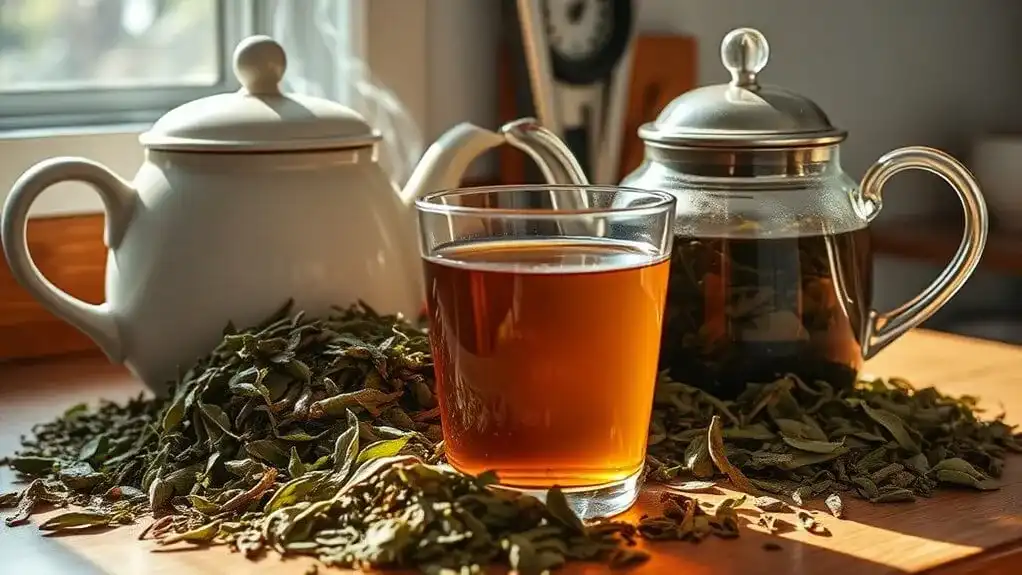
Since brewing green tea requires precision, understanding common pitfalls can help you avoid a disappointing cup. One of the most essential brewing variables is water temperature – using water that's too hot will extract bitter compounds, while too-cool water won't release the tea's full flavor profile. The ideal temperature sits around 60°C for the first brew. Most unflavored green teas can offer multiple infusions when brewed correctly. For the best results, aim to use 2 teaspoons sencha per cup of water.
Another common mistake is improper steeping time. Over-steeping leads to bitterness, while under-steeping results in weak tea. Some teas may provide unique flavors through long-term steeping, particularly wild or hand-crafted varieties. Similarly, using too much or too little tea affects the final taste markedly. Each tea type demands specific brewing parameters, and high-quality whole-leaf teas respond differently than tea bags. While tea companies often provide brewing instructions, it's worth experimenting with these variables once you understand the basics.
Maximizing Health Benefits Through Proper Brewing
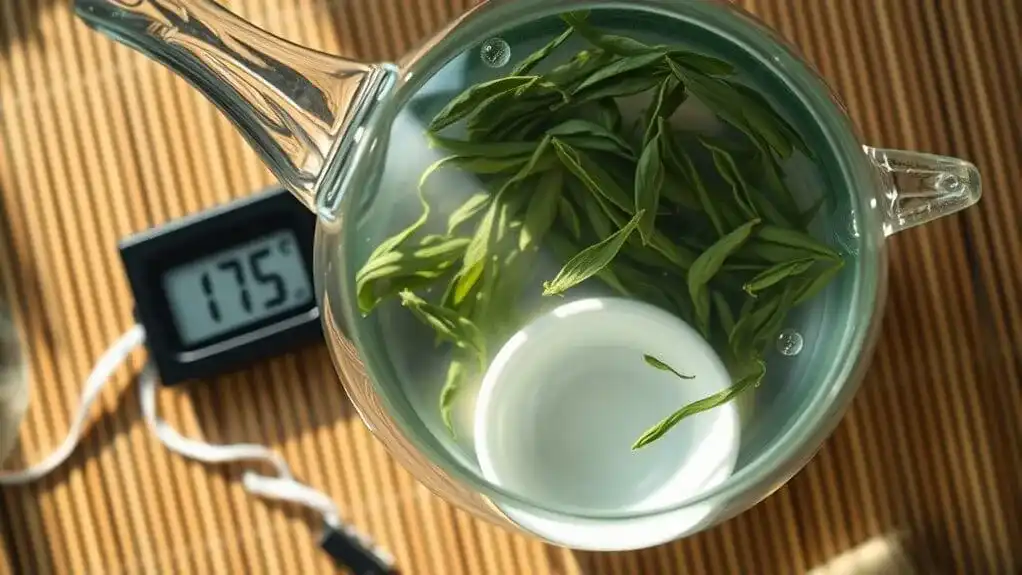
Proper brewing techniques play an essential role in releasing green tea's full health potential. To maximize health benefits, it's vital to maintain ideal brewing temperatures, typically using water that's hot but not boiling. Lower temperatures help preserve delicate antioxidants and beneficial compounds like catechins, which can be damaged by excessive heat. Using soft, filtered water will enhance both the taste and health properties of your tea. Regular tea consumption has been shown to decrease risk of strokes by up to 24%. Timing also matters considerably. The ideal brewing duration varies, but for maximum antioxidant preservation, shorter steeping times often work best. It's recommended to consume the tea within 10 minutes of preparation to get the most health benefits. Experts suggest drinking at least three cups daily to achieve optimal wellness results. High-quality whole leaf teas offer superior benefits compared to tea bags, containing more polyphenols that help reduce heart disease risk and support cognitive function. The combination of proper temperature, timing, and tea quality creates the perfect foundation for optimal health benefits.
Conclusion
Like unsealing Pandora's box of ancient wisdom, mastering green tea brewing opens up a world of flavor and wellness possibilities. While it may seem intimidating at first, following these guidelines will help beginners brew the perfect cup every time. With the right equipment, quality leaves, and proper technique, anyone can transform simple leaves and water into a drink that's kept tea masters enchanted for centuries.
